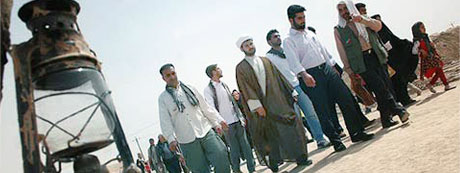For the person who is obese and looking to get help with their problem, they will find that there are many different types of solutions available to them, not just obesity surgery. However, it cannot be denied that obesity surgery is turning out to be one of the most popular methods of dealing with obese. In some cases, obesity surgery is the only option available for a person to take if they wish to deal with their obesity, but it cannot be denied that this type of surgery can be dangerous heavy duty ratchet tie down straps, and not just in the way that normal surgery is dangerous either. Obesity surgery carries with it many risks, and the person who is looking at or going in for obesity surgery needs to be made aware of all of their options. They will also need to learn about the inherent risks involved with these types of surgery, as well as the chances they have of losing the weight which makes them obese. They need to be given the ramifications of the obesity surgery they are looking to undergo.
They need to be told that in some, if not most cases, obesity surgery cannot be reversed. And where the surgery is being carried out privately, people who are looking into getting this surgery also need to be made aware that a perfect track record of surgery, or even a track record where the institution has never before had to carry out reverse obesity surgery, might be misleading. For instance, some types of obesity surgery, although theoretically possible to be reversed, are far not realistically speaking possible. Its also true that some institutions dont undertake to carry out reverse obesity surgery. They might claim that they do, but when push comes to shove, the reality is that you might have to go elsewhere if you want to have your obesity surgery reversed. One of the bigger issues that a person who is looking at obesity surgery will have to deal with and come to terms with, is that life after obesity surgery is never going to be the same. You will need to assiduously watch what you eat; you will, with certain types of obesity surgery, never be able to eat "normal" portions of food again; and you will need to stick to a strict dietary regime so as not to cause complications. Although it might seem as if obesity surgery is a viable option to dealing with obesity, the person who is looking at this, needs to be fully educated as to every step they will need to take, and how the surgery will affect their life. In this case, knowledge really is power, as experience might come too late.
However throughout history there have been 4 different types of helicopters that are commonplace:Single main rotor with a tail rotor – or any other type of tail mechanism.Tandem rotors such as the Boeing ChinookCoaxial rotors which are two rotors mounted on the same axis, but turning in different directions. This configuration is especially common among Russian military helicoptersIntermesing rotor configuration, which consists of two rotors placed on separate axises, that are placed very close to each other. The rotors move in opposite direction – and at the same speed – so that they do not hit each other.Single main rotor with a tail rotorSingle rotor helicopters must have a mechanism to neutralize the yawing movement created by the single large rotor. This is what the tail is required for.The tail rotor is a smaller rotor mounted so that it rotates vertically or close- vertically at the end of the tail of a conventional single-rotor helicopter. The location and distance from the center of gravity of the tail rotor allow it to develop push in the exact same direction as the main rotor’s rotation, to counter the torque effect created by the main rotor. Tail rotors are simpler than main rotors since they need thrust to vary.
The pitch of the tail rotor blades is adjustable by the pilot via the anti-torque pedals, which also provide directional control by allowing the pilot to rotate the helicopter around its vertical axis.Tandem rotorsTandem rotor helicopters have two large flat rotor assemblies. Currently this configuration is largely used for big cargo helicopters. Tandem rotor helicopters have the advantage of having the ability to hold more weight with shorter blades, since there are two sets. Tandem rotor helicopters usually require less power to hover and realize low rate flight as compared to single rotor helicopters.Coaxial rotorsCoaxial rotors are a pair of rotors turning in opposite directions and mounted one above the other on the exact same shaft. The upside of the coaxial rotor is that, in forward flight, the lift provided by each rotor compensates for the retreating lift of the other rotor. This makes them efficient and good at lifting heavy cargo.Intermeshing rotorsIntermeshing rotors have high stability and strong lifting capacity. This configuration is sometimes referred to as a synchropter. Most intermeshing layouts have two blades per mast, although exceptions such as with three blades per mast do exist.



















